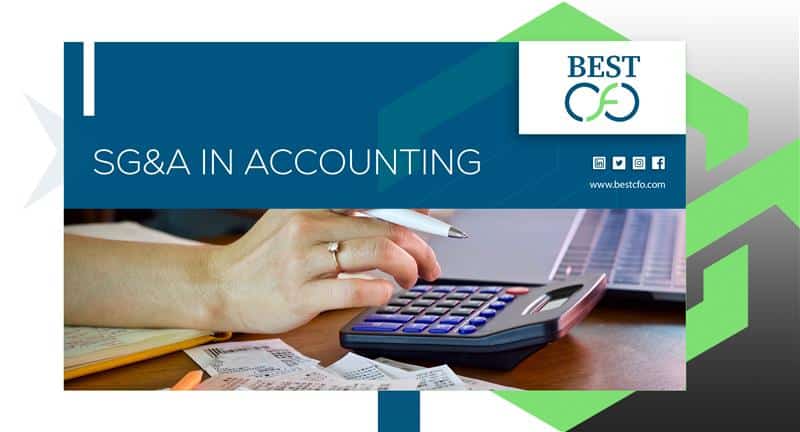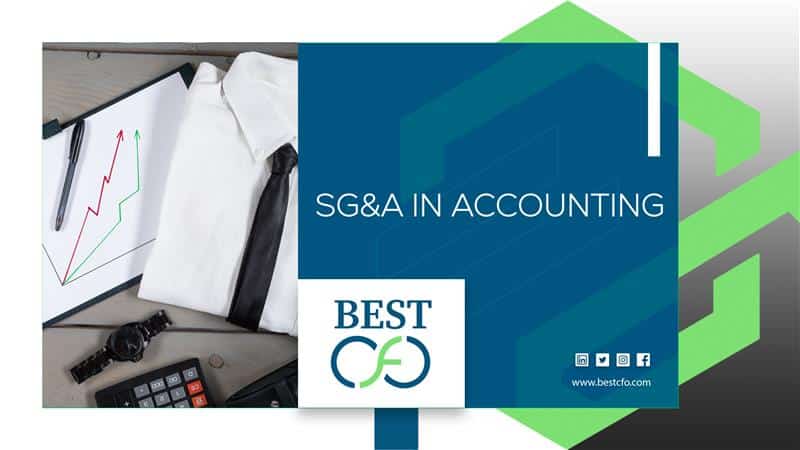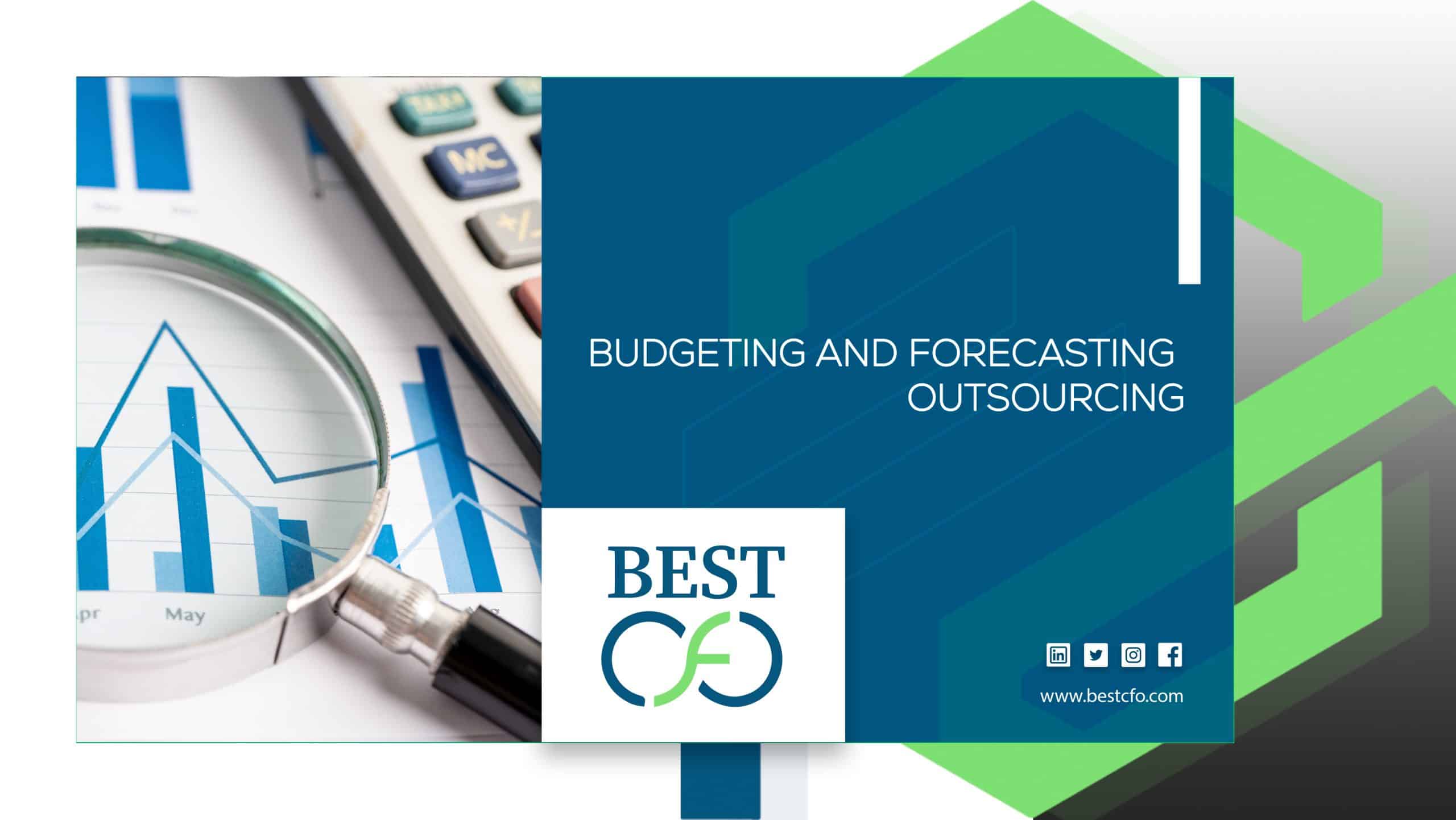
| Getting your Trinity Audio player ready... |
What Is SG&A in Accounting: A Detailed Guide
In the world of accounting, businesses have many types of costs. One important category is SG&A, which stands for Selling, General, and Administrative Expenses. These costs don’t directly help make products, but they are still necessary to keep the business running. SG&A covers everything from sales team travel to office rent.
Understanding SG&A is key to financial analysis, planning, and making smart money decisions in your company. This guide will break down what SG&A means, how it’s used, and why it matters for your business’s success.
What Is SG&A in Accounting?
SG&A in accounting encompasses all the everyday costs that are not directly tied to producing products or delivering services. Think of it as the overhead that supports your company’s daily work.
How SG&A Differs from COGS and Operating Expenses
- Cost of Goods Sold (COGS): These are the direct costs of making or buying the product you sell (like raw materials or labor on a factory line).
- SG&A: These are indirect costs, like advertising or salaries for office staff.
- Operating Expenses: This is a bigger umbrella term that includes both SG&A and other business costs.
Common SG&A Expenses
- Salaries for managers, HR, finance staff
- Rent and utilities for offices or warehouse space
- Marketing and advertising
- Office supplies, phone, and internet bills
- Legal and accounting fees
- Insurance costs
- Subscriptions for business software
Components of SG&A Expenses
Here are a few components of SG&A expenses:
Selling Expenses
These costs are tied to getting your product to customers:
- Sales commissions for the sales team
- Marketing campaigns or digital ads
- Travel expenses for sales visits or trade shows
- Shipping and delivery costs
General & Administrative Expenses
These are the core business operations costs:
- Office rent, electricity, and water
- Human resources and finance team salaries
- Lawyer and accounting services
- IT infrastructure and system maintenance
Other Miscellaneous SG&A Costs
- Depreciation on office machines and tools
- Software subscriptions like CRM or payroll apps
- Training programs for staff
How to Calculate SG&A in Accounting
The following is how to calculate SG&A in accounting:
Formula:
Total SG&A = Selling Expenses + General & Administrative Expenses
Let’s say a small tech company has the following costs for a year:
- Selling Expenses: $120,000
- General & Administrative Expenses: $180,000
- Total SG&A = $120,000 + $180,000 = $300,000
Where to Find SG&A in Financial Statements
You can find SG&A listed on the Income Statement, usually just below gross profit and above operating income.
Knowing this helps track how much of your revenue goes toward running the business outside of production.
SG&A vs. Operating Expenses: Key Differences
While SG&A is a type of operating expense, not all operating costs are SG&A. Here’s how they differ:
- COGS is direct and includes costs to make or deliver goods.
- SG&A is indirect and supports the company as a whole.
- Research and Development (R&D) is often listed separately from SG&A.
Breaking out SG&A gives businesses and investors better insight into management efficiency and cost control.

Importance of SG&A in Accounting Analysis
SG&A has a big impact on profitability. Let’s look at two key ideas:
Gross Profit vs. Operating Profit
- Gross Profit = Revenue – COGS
- Operating Profit = Gross Profit – SG&A
If SG&A is too high, it can reduce net income, even when sales are strong.
Operating Margin
Operating Margin = (Operating Income ÷ Revenue) × 100
A lower SG&A can boost your operating margin, which tells how well a company turns sales into gross profit. Investors often use this to measure financial health.
Case Study: SG&A Red Flags
A business with growing sales but shrinking profits may be spending too much on advertising or management salaries. High SG&A costs with little return can signal inefficiency or poor planning.
Strategies to Optimize SG&A Expenses
Smart businesses always look for ways to lower costs without hurting performance.
Cost-Cutting Measures
- Use automation tools for payroll, scheduling, and bookkeeping
- Outsource non-core jobs like IT support or tax services
- Negotiate better prices with vendors and suppliers
Efficiency Improvements
- Invest in expense tracking software
- Allow remote work to save on office space
- Focus your marketing budget on high-performing channels
Monitoring & Benchmarking
- Compare your SG&A to similar companies
- Set budgets and KPIs to manage costs
- Do regular financial audits to spot wasteful spending
Real-World Examples of SG&A Management
Here are some real-world examples:
1. Tech Startup Goes Digital
A startup saved thousands by using cloud-based tools instead of expensive office software. This move helped cut both IT costs and hardware maintenance.
2. Retail Company Optimizes Ads
A fashion brand lowered ad spending by focusing on social media and email marketing. Even with lower ad costs, their sales stayed strong.
3. Manufacturer Saves on Delivery
A manufacturing firm used better logistics software to find cheaper shipping routes. This cut freight transport costs while keeping customers happy.
Common Mistakes in Managing SG&A
Even big corporations make SG&A errors. Here are a few to avoid:
- Ignoring small, repeating expenses like unused software or paper supplies
- Cutting useful costs like marketing, which can harm growth
- Not updating SG&A plans when the economy changes
Proper budgeting, regular audits, and good financial management can prevent these problems.
Conclusion
SG&A in accounting may not create products, but it keeps the business alive. From payroll to advertising, these costs play a major role in net income, operating margin, and long-term growth.
Understanding and managing SG&A is key for smart business economics. Whether you’re a startup or a public company, staying on top of these expenses is vital.
Want expert help with your financial planning and SG&A strategy? Work with the Best CFO to make smarter money decisions today.
FAQs
1: Is SG&A the same as overhead?
Not exactly. Overhead is a broader term. SG&A is part of overhead but includes only sales, admin, and management costs.
2: Can SG&A be capitalized?
Usually not. SG&A is an operating cost and appears on the income statement, not the balance sheet. It’s treated as a period expense, not an asset.
3: How does SG&A affect net income?
SG&A is subtracted from gross income to calculate operating income. High SG&A can lower net income, even with strong sales.
4: What’s a good SG&A to revenue ratio?
It varies by industry, but 10–25% is common. Use benchmarking to compare your ratio to others in your market.
5: How can startups manage SG&A effectively?
Start small. Use free or low-cost software, avoid unnecessary office space, and track every dollar. Regular audits help keep spending in check.
Previous Post
How to Scale a Marketplace Business: A Growth Blueprint
Post a comment Cancel reply
Related Posts
From Finance to Future-Proofing: The Strategic CFO for IT
From Finance to Future-Proofing: The Strategic CFO for IT Suppose a traditional CFO sitting at…
CFO vs Finance Manager: Choosing The Right One For You
CFO vs Finance Manager: Choosing The Right One For You The finance world can be…
When Should You Outsource My CFO? – The Guide
When Should You Outsource My CFO? – The Guide Every business, no matter how small…
Top 5 Reasons Why You Should Outsource HR
Top 5 Reasons Why You Should Outsource HR Outsourcing is gaining popularity among businesses looking…
 Demos
Demos  Colors
Colors  Docs
Docs  Support
Support 










